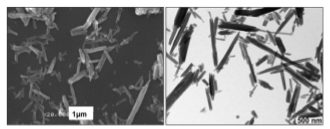TNANO Article in focus: October 2016
From the September 2016 issue of IEEE Transactions on Nanotechnology
Halloysite Clay Nanotubes as Carriers for Curcumin: Characterization and Application
by Chiara Dionisi ; Nemany Hanafy ; Concetta Nobile ; Maria Luisa De Giorgi ; Ross Rinaldi ; Sergio Casciaro ; Yuri M. Lvov ; Stefano Leporatti
T-NANO, Vol. 15, Issue 5, pp. 720 – 724, September 2016.

Abstract: Halloysite is a nanostructured clay mineral with hollow tubular structure, which has recently found an important role as delivery system for drugs or other active molecules. One of these is curcumin, main constituent in the rhizome of the plant Curcuma Longa, with a series of useful pharmacological activities, hindered by its poor bioavalaibility and solubility in water. In this study, Halloysite clay nanotubes (HNTs) were characterized in terms of both structure and biocompatibility and they were used for curcumin delivery to cancer cells. The performed 3-(4, 5-dimethythiazol-2-yl)-2, 5-diphenyl-tetrazolium bromide (MTT) assay showed that HNTs have a high biocompatibility, also when coated with polymers, while curcumin is highly toxic for cancer cells. The release kinetics of curcumin from HNTs was investigated by the dialysis bag method, showing a slow and constant release of the drug, which can be further controlled by adding layers of polyelectrolytes to the external surface of the tubes. Successful polymer coating was followed by Zeta potential. The Trypan Blue assay showed a cytotoxic effect of loaded HNTs, proportional to the concentration of tubes and the incubation time. Successful HNTs uptake by breast cancer cells was demonstrated by Confocal Laser Scanning Microscopy images. All results indicate that HNTs are a promising carriers for polyphenol delivery and release.

